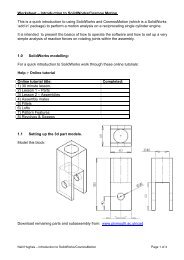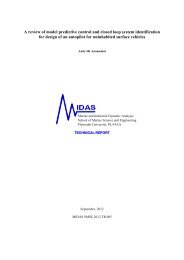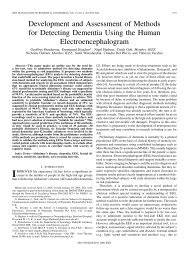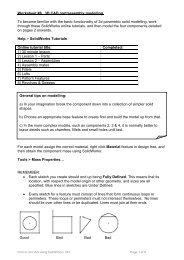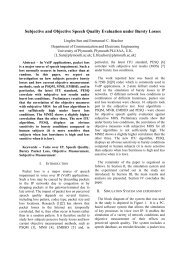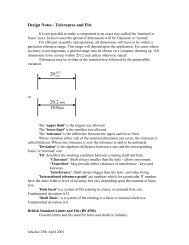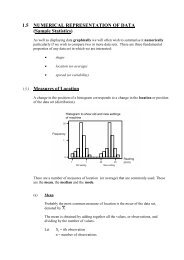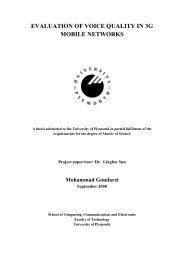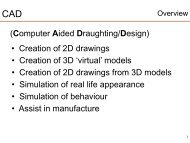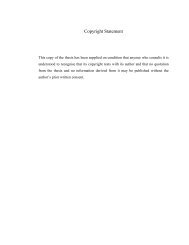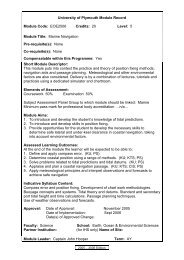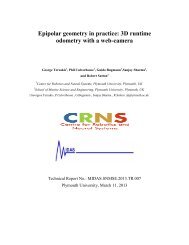Designing an Anaphora Resolution Algorithm for Route Instructions
Designing an Anaphora Resolution Algorithm for Route Instructions
Designing an Anaphora Resolution Algorithm for Route Instructions
You also want an ePaper? Increase the reach of your titles
YUMPU automatically turns print PDFs into web optimized ePapers that Google loves.
Even though the first Final Sentence Rule defined like this will not correctly resolve<br />
all <strong>an</strong>aphors occurring in final sentences, it expresses the preference that <strong>an</strong>aphors<br />
marked as I-incompatible more often refer to the task (which refers to the sequence of<br />
events taking the robot to the destination) th<strong>an</strong> to a single event of the route<br />
instruction. This rule describes <strong>an</strong>other domain specific phenomenon.<br />
The second Final sentence rule deals with <strong>an</strong>aphoric reference to the<br />
destination without explicitly mentioning the destination in the utter<strong>an</strong>ces preceding<br />
the <strong>an</strong>aphor. This phenomenon occurs quite often in data. For resolving the <strong>an</strong>aphor<br />
mentioned in the final sentence to the destination stored in the discourse model, the<br />
algorithm firstly has to check whether the <strong>an</strong>aphor is a pronoun, as this was the case<br />
in all the examples found in the data; replacing the pronoun by a demonstrative<br />
sounds odd (cf. examples 8 <strong>an</strong>d 9).<br />
8) <strong>an</strong>d it is on your left there<br />
9) <strong>an</strong>d that is on your left there<br />
Secondly, the properties of the <strong>an</strong>aphor have to match the properties of the<br />
destination (usually only the type constraint: ‘building’). Finally, the algorithm has to<br />
find out if the destination is mentioned in one of the previous utter<strong>an</strong>ces (e.g. if<br />
unit(4) is the final unit, units(3 <strong>an</strong>d 2) have to be checked). If all these conditions are<br />
fulfilled, the <strong>an</strong>aphor is resolved to the destination stored in the discourse model. If<br />
the <strong>an</strong>aphor does not match the properties of the destination, the Pronominal<br />
<strong>Anaphora</strong> Rules (see below) are applied. If the destination is mentioned in one of the<br />
previous units, the <strong>an</strong>aphor is resolved to the most recently mentioned destination.<br />
Be<strong>for</strong>e the next rules are explained, it needs to be said that it is assumed <strong>for</strong> the First<br />
<strong>an</strong>d Final sentence rules that the algorithm is able to recognise the first <strong>an</strong>d final<br />
sentence of the route instructions.<br />
The remaining <strong>an</strong>aphors, either pronominal <strong>an</strong>aphors (‘it’, ‘this’ <strong>an</strong>d ‘that’), or<br />
‘This-NP’-<strong>an</strong>aphors (e.g. ‘that road’) are resolved by the Pronominal <strong>Anaphora</strong><br />
Rules <strong>an</strong>d This-NP-<strong>Anaphora</strong> Rules respectively. The Pronominal <strong>Anaphora</strong> Rules<br />
use the concept of the S-List or of the A-List is in order to determine the <strong>an</strong>tecedent<br />
of the <strong>an</strong>aphor while the ‘This-NP’-<strong>an</strong>aphora rules additionally employ the implicit<br />
40



